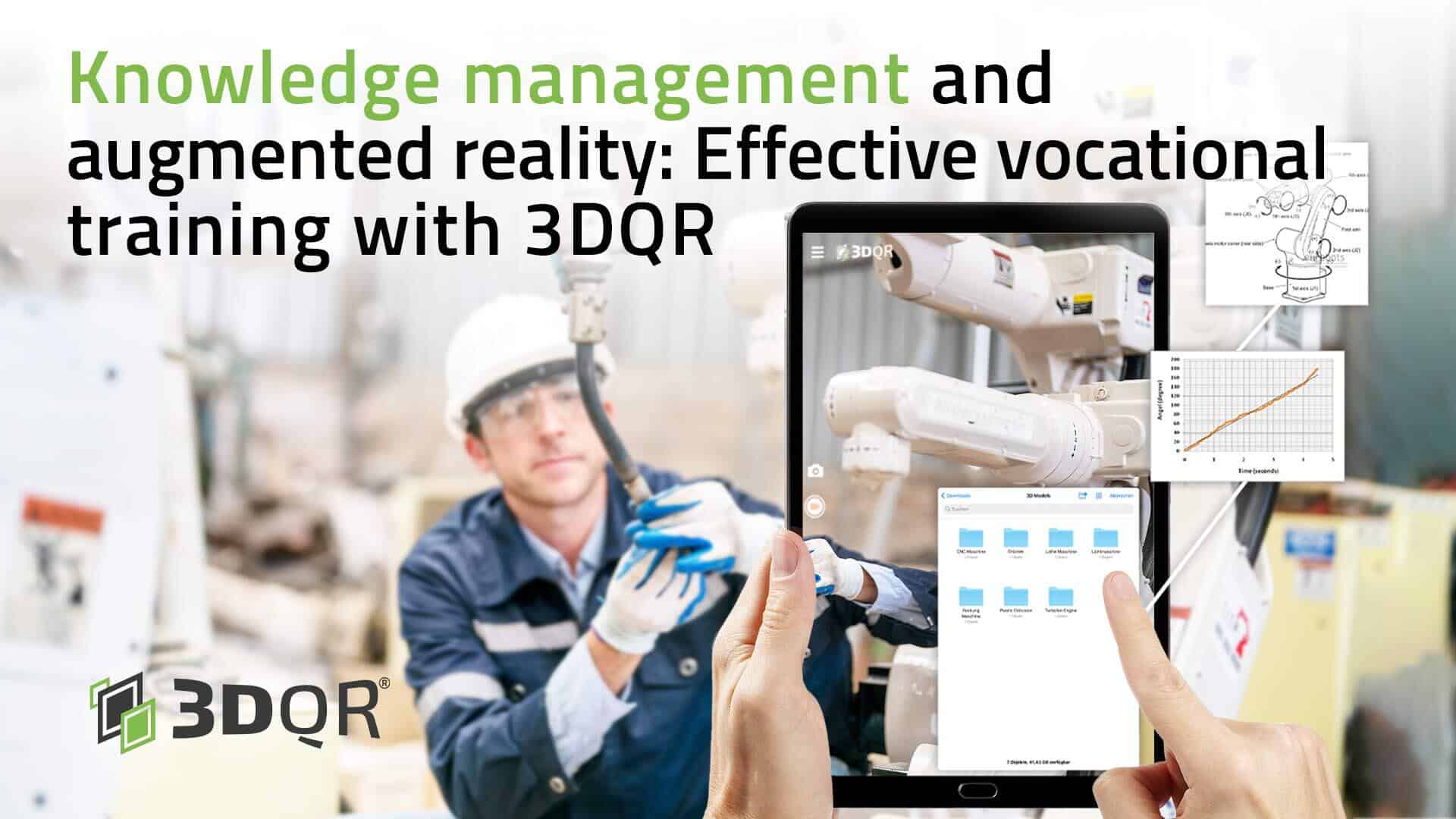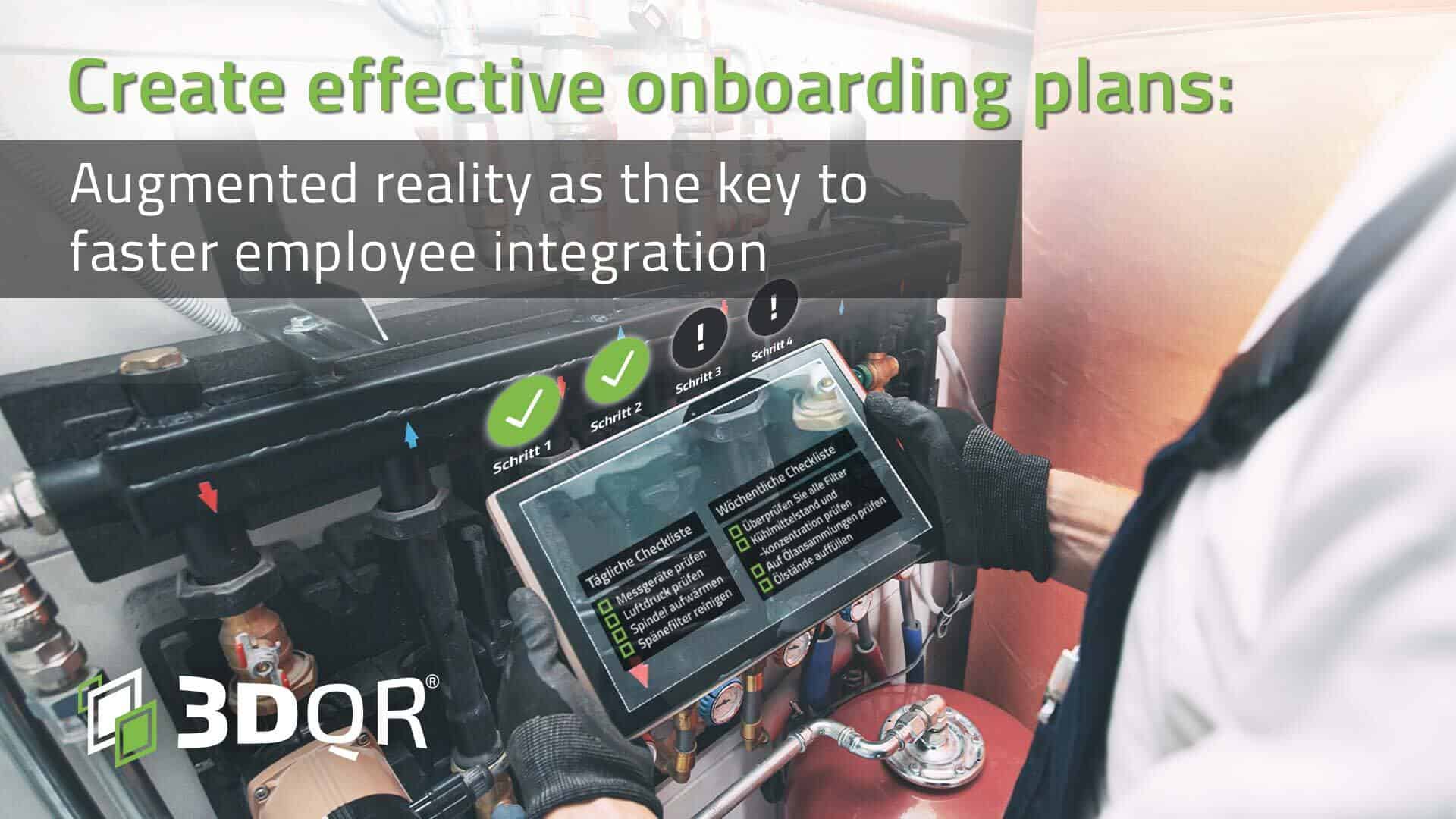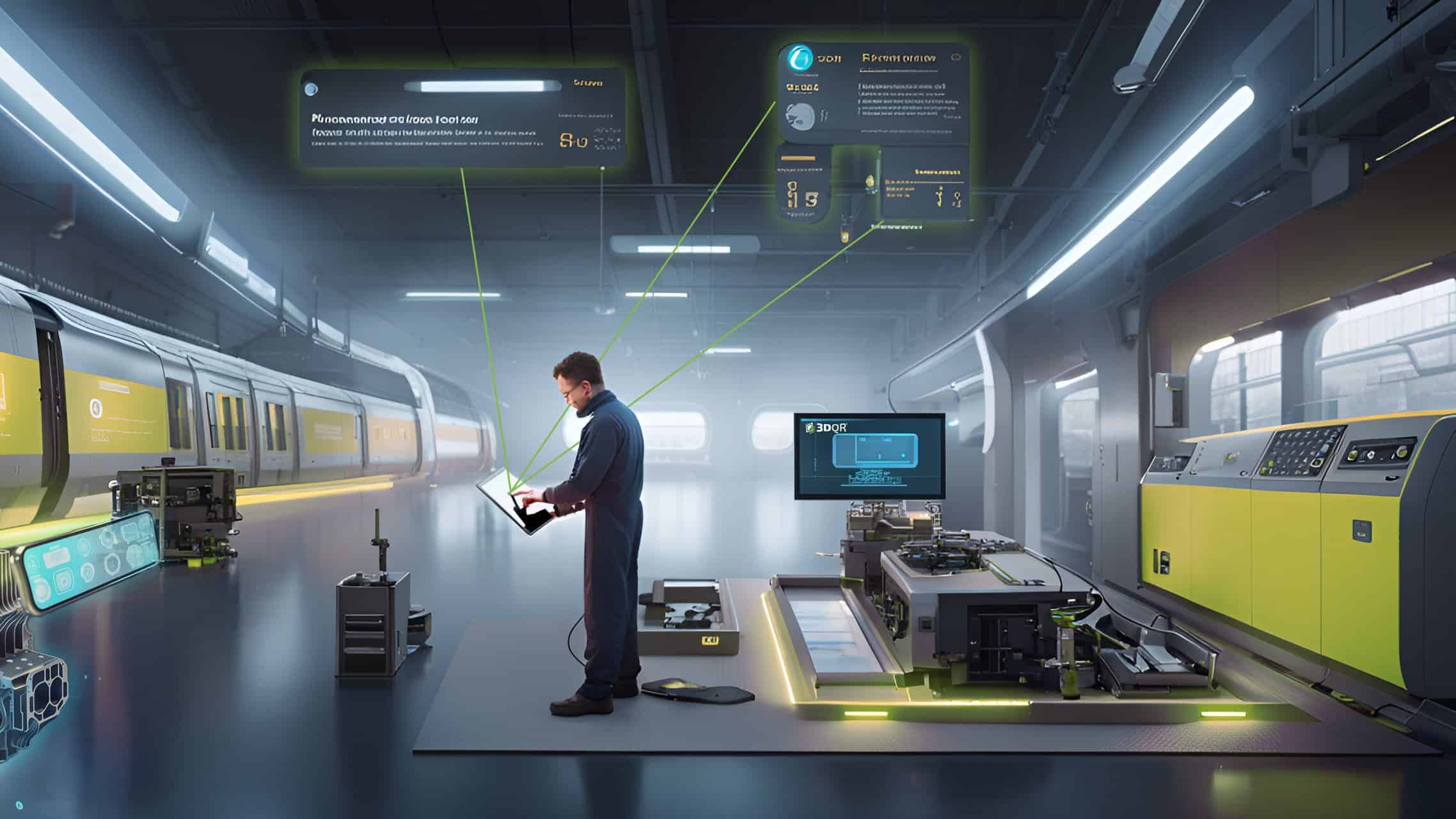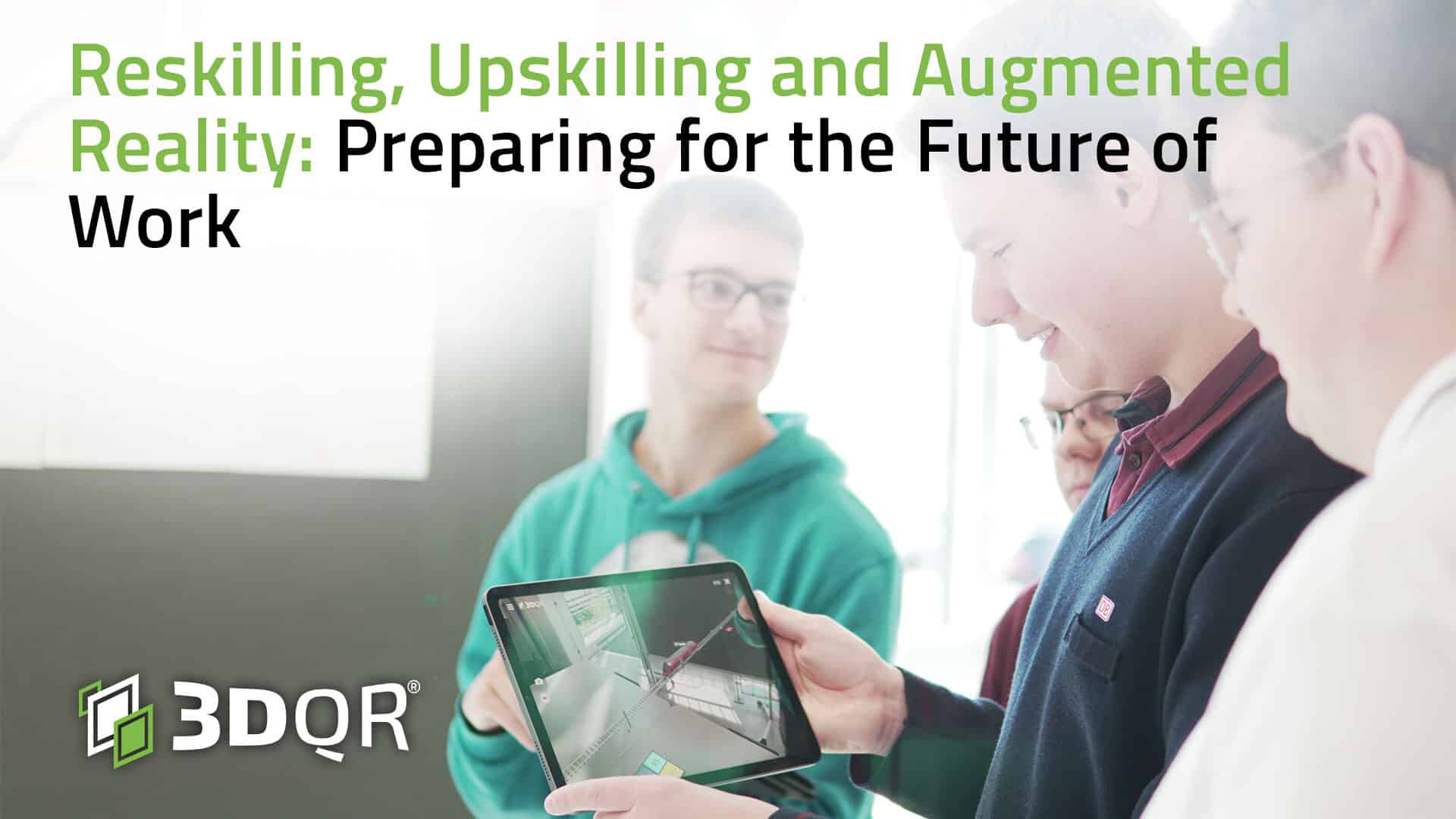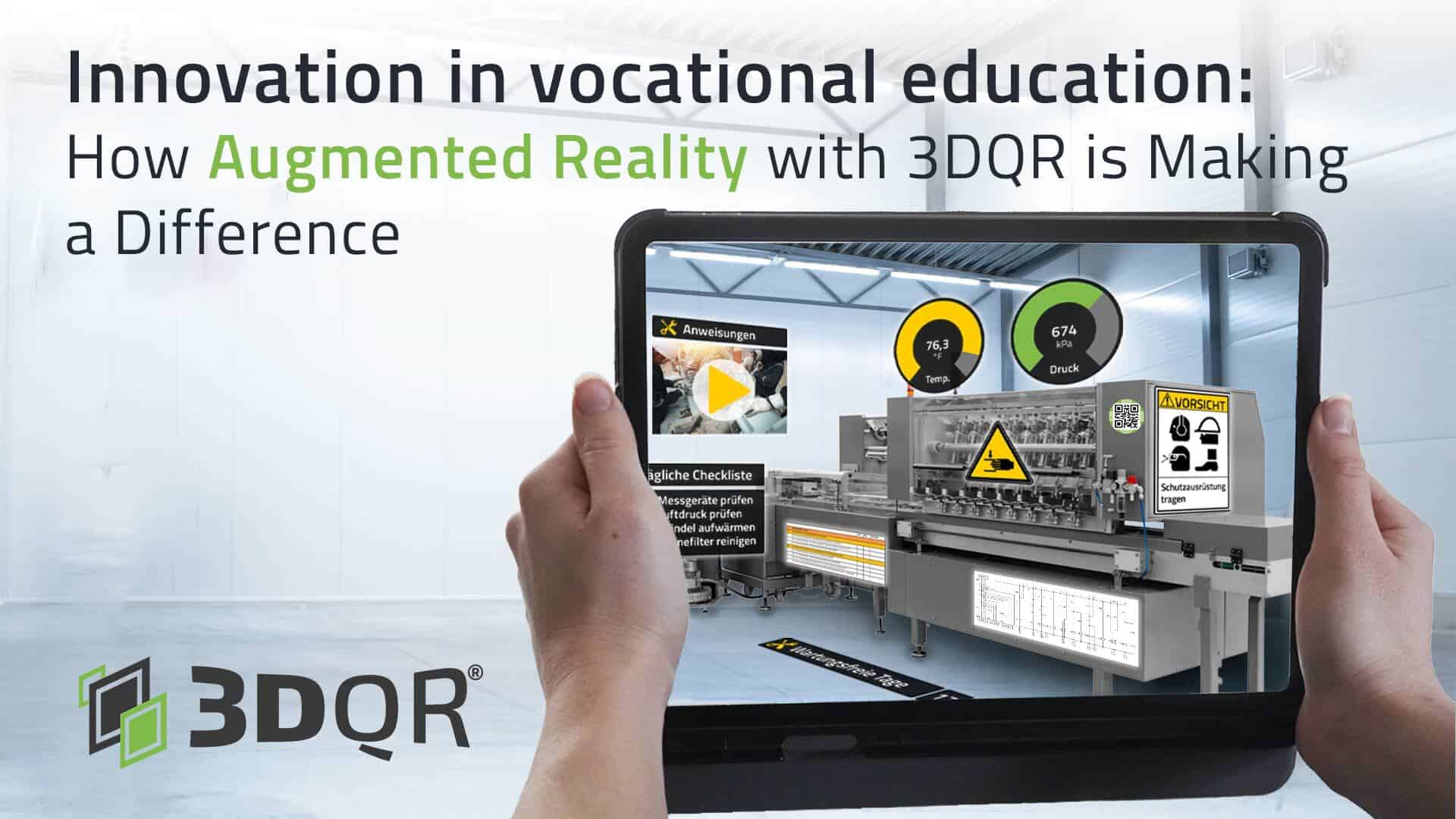Inhaltsverzeichnis
In the rapidly evolving digital landscape, Augmented Reality (AR) has emerged as a groundbreaking tool with potential to revolutionize various sectors. Particularly in education and training, AR is transforming traditional methods, making learning more interactive, engaging, and effective. It enhances comprehension, fosters creativity, and boosts retention by providing immersive, experiential learning environments. This blog post explores the transformative power of AR, with a special focus on its implementation through no-code tools, such as 3DQR, for on-the-job training. Buckle up as we delve into the world of AR and uncover its potential to reshape the future of learning and training.
The Power and Benefits of AR in Education and Training
In the ever-evolving landscape of education, Augmented Reality (AR) is emerging as a potent tool, transforming traditional pedagogical approaches and redefining how knowledge is imparted.
The Impact of AR on Learning
Diving deeper into the psychological impacts of AR, one discovers how it breathes life into learning experiences. AR systems offer stimulating, captivating, and immersive environments that foster learning. By overlaying digital information onto the physical world, AR brings learning content to life, making it attractive and exciting for learners. The hands-on nature of AR not only increases user engagement but also propels learners to interact with the learning content actively, leading to a more profound understanding of the subject matter.
Moreover, AR promotes a learner-centered educational setting, enabling students to explore resources at their own pace and apply them to real-world contexts. This shift in learning dynamics bolsters motivation, nurtures curiosity, and paves the way for a diverse range of perspectives. As learners navigate through these immersive experiences, they encounter an enhanced enthusiasm for learning, which can translate into a deeper understanding of the subject matter.
By bridging the gap between theory and practice, AR infuses an element of ‘reality’ into learning, making education more relevant and relatable for learners. Overall, the incorporation of AR in education and training can have profound psychological impacts, driving increased motivation, engagement, and interest in learning, thereby cultivating a more effective and efficient learning environment.
We’ll continue to unravel the potential of AR in subsequent sections, focusing on its implications in the realm of Human Resources and Instructional Design.
AR in HR: Revolutionizing On-the-Job Training
The impact of Augmented Reality (AR) extends beyond the realm of education and into the corporate sector, redefining traditional HR practices. This cutting-edge technology is revolutionizing on-the-job training, enhancing employee development, and optimizing overall business performance.
The Role of AR in HR
Augmented Reality is transforming employee training and development. This technology overlays digital information onto the real world, creating an immersive, interactive environment that fosters learning and skills development. The three-dimensional representation of real-world scenarios eliminates the boundaries between learners and the learning content, offering a more engaging and practical training experience.
Workplaces worldwide are leveraging AR to streamline their on-the-job training processes. With AR, employees can familiarize themselves with a company’s operations and training mechanisms without needing to be physically present. This remote learning capability not only enhances a company’s performance by providing comprehensive training to employees but also facilitates interaction and collaboration among team members, despite geographical distances.
Moreover, AR is changing the dynamics of risk management in businesses. Corporate training programs, particularly for high-risk industries, can leverage AR to provide immersive, realistic training scenarios. This enables employees to practice handling dangerous situations in a risk-free, virtual environment, enhancing their preparedness and confidence.
The role of AR in an employee’s training cycle extends beyond initial training. AR can be used to provide remote assistance and ongoing support to employees, helping them navigate complex procedures or unfamiliar situations. This on-demand knowledge support enhances employees’ efficiency and effectiveness, leading to improved job performance.
Furthermore, AR presents opportunities for businesses to implement new procedures or technologies without disrupting the current workflow. Companies can hire subject matter experts (SMEs) to enrich the knowledge base and support functions from different regions, keeping employees on the frontlines equipped with the latest information and best practices.
As we look to the future, AR’s role in employee training and development is set to expand even further, offering more innovative, efficient, and effective ways to equip employees with the skills and knowledge they need to succeed.
No-Code AR Tools: 3DQR Paving the Way for Easy to Use AR Implementation
In an era where Augmented Reality (AR) is revolutionizing sectors from education to human resources, the perceived complexity of implementing AR technology can be daunting. However, no-code AR tools like 3DQR are breaking these barriers, democratizing AR, and offering an “easy to use AR tools” solution that requires minimal technical expertise.
Unleashing the Potential of AR with 3DQR
The 3DQR Suite, a comprehensive no-code AR software, exemplifies the transformative power of user-friendly AR technology in various professional and educational domains. Let’s delve into the elements that make 3DQR an innovative AR software for training and education:
3DQR Studio: Acting as a content management system for AR, the 3DQR Studio allows users to manage their AR scenes, adjust parameters, and add content through a straightforward web-based platform. This feature demystifies the AR scene creation process, making it accessible even for non-technical users.
In-App Creator: Extending the convenience of AR creation to handheld devices, the In-App Creator lets users interact directly with the AR scene within their real-world environment. This feature of the 3DQR suite enables the tangible placement of virtual elements, enhancing the immersion and effectiveness of AR experiences.
3DQR Cloud Database: All user-generated content is securely housed in the 3DQR Cloud Database. This ensures the safety and confidentiality of AR content while providing the flexibility of cloud-based access. For larger organizations requiring additional security, on-premise solutions are also available.
3DQR End-User App: Available on Android and iOS devices, the 3DQR End-User App brings AR experiences to life. It allows users to scan QR codes that serve as identifiers for AR scenes, providing a seamless transition between real-world and augmented elements.
In addition to these, the 3DQR Suite allows integration with live IoT data or REST API connections, demonstrating its capacity as an innovative AR software for training. Such features enable users to create dynamic, data-rich AR environments that go beyond static imagery, offering truly immersive and interactive experiences.
With its user-friendly features and robust capabilities, 3DQR embodies the power of no-code AR tools. It not only makes AR accessible to a wider audience but also opens avenues for tailored AR experiences across diverse contexts. This suite is paving the way towards a future where anyone can leverage AR’s transformative potential without being hindered by technical complexities.
Conclusion: The Future of AR in Education and Training
As we’ve explored in this blog post, Augmented Reality (AR) is transforming the landscape of education and training. It’s stimulating immersive learning experiences, revolutionizing on-the-job training, and breaking the barriers of complex implementation with no-code AR tools such as 3DQR.
AR’s potential is vast, and we’re only beginning to scratch the surface. The use of AR in education and training is expanding beyond initial experiments, and becoming a staple feature of innovative learning strategies and employee development programs. AR provides a promising avenue for creating more engaging, impactful, and efficient learning experiences, and we can expect to see its adoption continue to rise in the coming years.
Yet, while the future of AR is undoubtedly exciting, it can also seem daunting for those new to the technology. But fear not, with no-code AR tools like 3DQR, implementing AR is more accessible than ever. 3DQR’s easy-to-use AR tools empower individuals and organizations to create customized AR experiences, regardless of their technical expertise.
If you’re ready to harness the power of AR for your organization’s training and education needs, 3DQR is here to help. We can guide you in building a workflow that empowers you and your team to create the AR solutions you need, tailored to your unique context and goals. Take the leap into the future of education and training with 3DQR, and transform learning experiences into immersive, engaging, and impactful journeys.
In our next post, we will delve deeper into the potential of AR in other professional domains. Stay tuned and join us in exploring the transformative world of AR.
Thank you for reading. If you have any questions or need more information, feel free to contact us, or follow us on LinkedIn. We’re here to help you embark on your AR journey.

